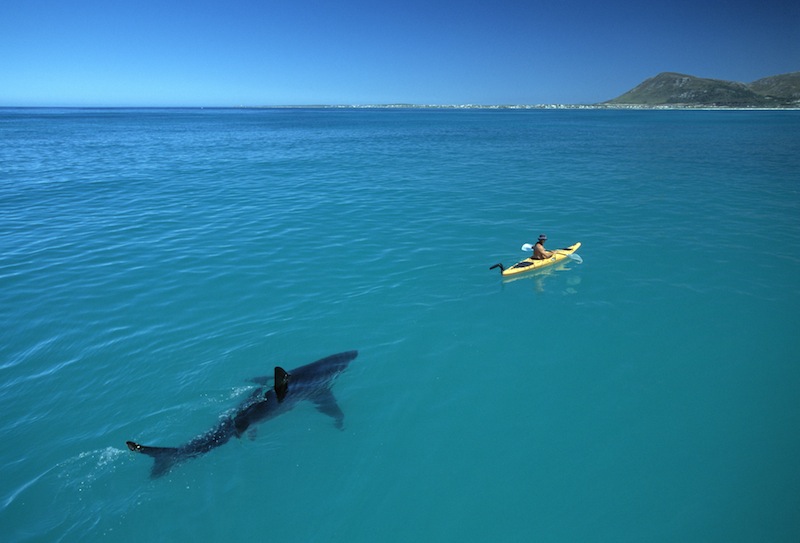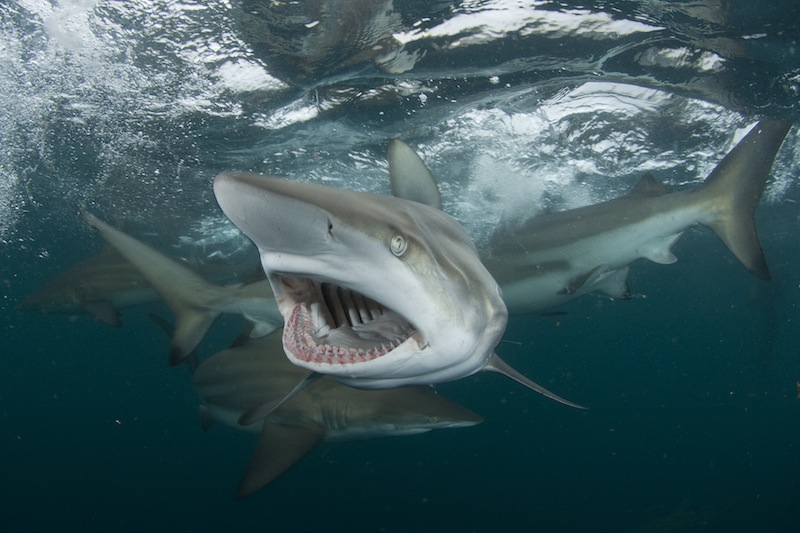Humbling View of Sharks Revealed in Stunning Photos

They lurk in nearly ever seascape across the globe, have been around since the dinosaurs, and range from 7 inches to 50 feet long. Yet for all their amazing ecology, sharks have had a rough run in the public eye.
"One thing that I have learned during my decade documenting sharks is that they resonate in a different way with each person," photojournalist Thomas P. Peschak writes.
To the shark fin dealer, they're a means of income; to a biologist, a well of information; and often in the popular imagination, they're a source of terror. Using intimate images captured during his career, Peschak presents a visual argument that sharks are worthy of respect and protection in his new book "Sharks and People" (University of Chicago Press, 2013).
Ten years ago, Peschak left a career as a marine biologist to become a photojournalist with a conviction that images could be more powerful than scientific data in driving conservation efforts. [Peschak's Photos: Seeing Sharks Up Close]
As a graduate student, Peschak studied the impacts of poaching on the South African abalone, but discovered that protection measures were hardly influenced by even the strongest proof that populations of the sea snails were being devastated.
"On the other hand," Peschak writes, "the response to the photographs I took during the course of my research, which showed poaching and seascapes devoid of life, was much more visceral and immediate."
Conservationists worry that sharks are threatened by overfishing. Many species are harvested for their meat, liver oil, cartilage and most of all their fins, which are used in shark fin soup, a pricey delicacy in East Asia. According to some estimates, 38 million sharks were killed in the fin trade alone in the year 2000, Peschak notes, while from 2002 to 2012, an average of five humans each year died in a shark attack.
Get the world’s most fascinating discoveries delivered straight to your inbox.
Shark attacks are statistically unlikely, but they have a disproportionate impact on the people and communities involved, Peschak writes. He should know; he witnessed a young diver brought to shore after a bite that resulted in an amputated leg. Peschak recalls that it changed his relationship with sharks forever.
With a camera in hand, it's best to approach the beady-eyed subjects with respect and humility, Peschak writes, but he's found sharks to be more curious than cruel. The real risks he faces are human-caused: political instability of the countries where he works, shoddy aircraft and contact with wildlife traffickers.
Follow Megan Gannon on Twitter and Google+. Follow us @livescience, Facebook & Google+. Original article on LiveScience.




